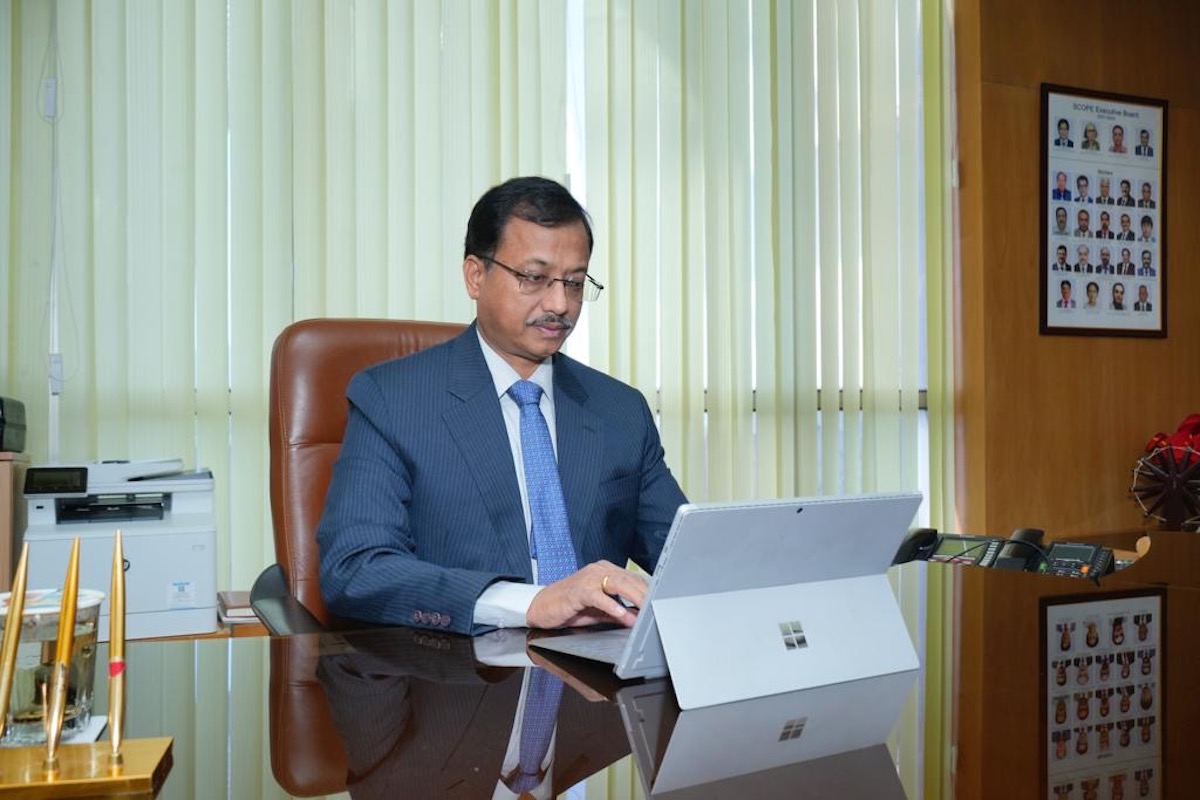Cotton is the world’s oldest commercial crop, but its passage from farmer to textile manufacturer is being brought into the 21st century with modern technology, thanks to The Cotton Corporation of India (CCI).

For 3,000 years, India held a global monopoly over the manufacturing of cotton textiles and is still in the top two producers worldwide. Today, this ancient industry is embracing technological advances that will enable it to thrive long into the future.
Helping farmers secure their incomes
Lalit Gupta, Chair and Managing Director, has been working for the CCI since 1994. In that time, he’s seen enormous change thanks to new ways of working that benefit both the Indian textile industry as a whole as well as small cotton farmers across the country.
The CCI performs a major role in protecting cotton farmers by providing an alternative platform to sell their produce when required. When the wider market prices are depressed, farmers can sell to the CCI for a government rate. This creates a sense of stability for the farmers, who know they’ll always be paid more than it costs them to produce their crop.
“The entire chain has improved because of the success of the overall textile industry’s growth in the country, and we are a dependable quality cotton supplier.”
Having access to cotton from a wide selection of producers also means the CCI can ensure a ready supply of quality cotton to the textile industry in India, which contributes nearly one-third of the total annual exports of the country. With more than 400 cotton procurement centers in all major cotton growing states, it’s easy for both buyers and sellers to access the hubs.
“We support the cotton farmers so that they continue with cotton cultivation, which is a very important raw material for the textile industry,” Gupta says. “At the same time, we help stabilize prices because, on either side, price volatility is not good.
“The entire chain has improved because of the success of the overall textile industry’s growth in the country, and we are a dependable quality cotton supplier.”

Pioneering tech solutions
Agritech services are helping farmers across India improve their yields by optimizing production, improving resilience and promoting sustainability. Tech is also helping to speed up processes, provide transparency on prices and availability of stock, as well as ensure farmers – wherever they are in the country – are paid in a timely fashion.
“CCI is a pioneer in technology,” Gupta says. “We’ve developed a mobile app where we provide details of all our services in nine languages. That app is there to empower the cotton farmer.”
“That app is there to empower the cotton farmer.”
The app allows farmers to see the fluctuating prices of cotton so they can easily make an informed decision about their harvest. And embracing technology at the procurement centers has meant there are no delays or disputes about payment for their cotton, thanks to an online billing facility.
“We release the payment within 72 hours, directly into their bank account,” he explains.
As the last decade saw a decline in India’s cotton production and productivity, mainly due to urbanization, attracting farmers to the crop is important. A quick-and-easy payment system, combined with a minimum payment guarantee, certainly ticks a lot of boxes when it comes to providing an incentive.
Tech for traceability
With the Indian average of around 2 hectares per farmer, cotton comes from many smaller properties in growing zones spread over the region. This means the CCI is working with up to three million farmers in a season. Traceability could be an issue, but technology – in the form of QR codes – holds the answer to this potential problem.
“Traceability is very important as a future requirement of the industry,” Gupta says. “Whatever stock we buy, we have traceability with QR codes. This shows we’re taking steps to help the industry meet its future, or current overseas requirements.” And this easy tracking will become even more important as sustainability moves higher up the agenda when it comes to cotton production.
“We’re taking steps to help the industry meet its future, or current overseas requirements.”
There’s no doubt CCI is embracing technology as the way to return to being the world leader in cotton. “We will be expanding the technology we use and strengthening the system,” Gupta adds.
“We are creating an app that will allow the buyer to get everything they need in one place, from making payments to arranging delivery. We’re also working on QR technology through blockchain to ensure products and processes are validated, resulting in a transparent market.
“In the next two-to-five years, I think the industry will be driven by innovation and it is prepared to take on the new challenges.”
It certainly seems that 21st century technological advances will secure the future of this ancient crop for a while longer.



